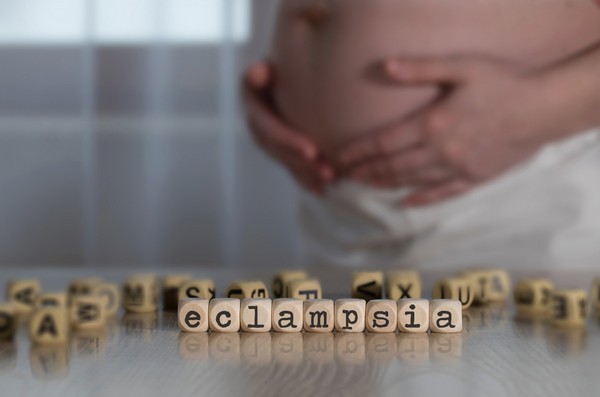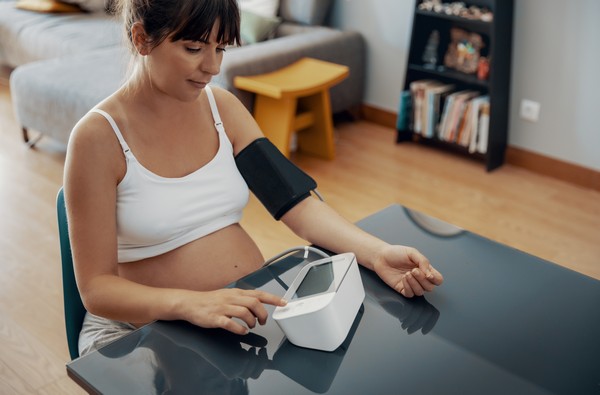Key Takeaways
- Pre-eclampsia involves high blood pressure and organ damage after 20 weeks of pregnancy.
- Early diagnosis through regular prenatal care is vital for managing pre-eclampsia.
- Symptoms include severe headaches, vision problems, and swelling in hands and face.
- Magnesium sulfate is used to prevent seizures in pre-eclampsia patients.
- Proper management can reduce risks for both mother and baby during pregnancy.
Introduction

Pre-eclampsia is a pregnancy complication characterized by high blood pressure and signs of damage to other organ systems, most often the liver and kidneys.
This condition typically develops after 20 weeks of pregnancy and can have serious consequences for both the mother and baby.
Pre-eclampsia is a leading cause of maternal and infant illness and death worldwide. Early detection and proper management are crucial to minimizing risks associated with this condition.
Causes and Risk Factors
Pre-eclampsia is thought to be caused by abnormal development of the placenta, but the exact cause remains unclear. Several factors can increase the risk:
- Genetic Factors: A family history of pre-eclampsia can raise the likelihood of developing the condition.
- Pre-existing Health Conditions: Women with hypertension, diabetes, or kidney disease are at higher risk.
- First-time Pregnancy: Women in their first pregnancy are more susceptible.
- Age and Weight Factors: Being over 35 or under 20, as well as being overweight, can increase the risk.
- Multiple Pregnancies: Carrying twins, triplets, or more can elevate the risk of pre-eclampsia.
Symptoms

The symptoms of pre-eclampsia can vary, but common signs include:
- High Blood Pressure: Consistently elevated blood pressure readings.
- Proteinuria: Presence of excess protein in the urine, indicating kidney involvement.
- Swelling: Notable swelling in the hands, feet, and face.
- Severe Headaches: Persistent headaches that do not improve with medication.
- Vision Problems: Blurred vision, light sensitivity, or seeing spots.
- Upper Abdominal Pain: Pain, particularly under the ribs on the right side.
- Nausea and Vomiting: Symptoms that may mimic morning sickness but occur later in pregnancy.
Diagnosis
Diagnosis of pre-eclampsia involves regular monitoring and specific tests, including:
- Blood Pressure Monitoring: Frequent checks to detect hypertension.
- Urine Tests: To measure protein levels and confirm proteinuria.
- Blood Tests: Assessing liver and kidney function, as well as platelet counts.
- Fetal Ultrasound: To evaluate the baby’s growth and development.
- Doppler Scan: To check blood flow in the placenta and ensure the baby is receiving adequate nutrients.
Complications

If not properly managed, pre-eclampsia can lead to severe complications:
- Eclampsia: The onset of seizures in a woman with pre-eclampsia, which can be life-threatening.
- HELLP Syndrome: A severe form of pre-eclampsia that involves hemolysis, elevated liver enzymes, and low platelet count.
- Organ Damage: Particularly to the liver, kidneys, and brain.
- Preterm Birth: Early delivery might be necessary to protect the mother and baby.
- Placental Abruption: The placenta can detach from the uterus, leading to severe bleeding.
- Fetal Growth Restriction: The baby may not grow at the expected rate due to reduced blood flow.
Treatment and Management

Managing pre-eclampsia involves a combination of careful monitoring and medical intervention:
- Magnesium Sulfate: Administered to prevent seizures (Eclampsia) in women with severe pre-eclampsia.
- Blood Pressure Control: Regular monitoring and medication to keep blood pressure within safe limits.
- Medications: Antihypertensive drugs and corticosteroids may be prescribed to manage symptoms and support fetal lung development.
- Bed Rest and Hospitalization: In severe cases, bed rest or hospitalization may be necessary to closely monitor both mother and baby.
- Early Delivery: If the condition worsens, early delivery, either through induction or C-section, may be required.
- Continuous Fetal Monitoring: Regular checks to ensure the baby is developing well and receiving adequate oxygen.
- Postpartum Care: Follow-up after delivery to manage any lingering health issues and monitor the mother’s recovery.
Magnesium is helpful in the management of pre-eclampsia, particularly in preventing the progression to eclampsia, a more severe form of the condition that can lead to seizures.
Magnesium sulfate is commonly administered to women with pre-eclampsia as it has been shown to reduce the risk of seizures significantly.
This treatment is both cost-effective and widely available, making it an essential tool in the management of pre-eclampsia, especially in settings where resources may be limited.
The administration of magnesium sulfate is typically safe, with close monitoring required to avoid potential toxicity, and it is a critical component in reducing maternal mortality associated with pre-eclampsia.
Prevention

While there is no guaranteed way to prevent pre-eclampsia, certain measures can reduce the risk:
- Regular Prenatal Care: Frequent check-ups allow for early detection and management of potential issues.
- Healthy Diet and Weight Management: Maintaining a balanced diet and healthy weight can lower the risk.
- Monitoring During Pregnancy: Paying attention to signs and symptoms helps catch the condition early.
- Managing Pre-existing Conditions: Proper control of hypertension, diabetes, and other health issues before and during pregnancy can reduce risk.
Magnesium supplementation during pregnancy has been studied for its potential benefits in preventing pre-eclampsia, particularly in women at high risk for the condition.
Some research suggests that maintaining adequate magnesium levels through diet or supplements may help reduce the incidence of pre-eclampsia by supporting vascular health and regulating blood pressure.
Additionally, magnesium’s role in smooth muscle relaxation can be beneficial in preventing the excessive contractions of blood vessels that contribute to high blood pressure in pre-eclampsia.
While the direct impact of magnesium supplementation on preventing pre-eclampsia is still being researched, ensuring sufficient magnesium intake is considered a proactive step in managing overall pregnancy health and potentially lowering the risk of developing pre-eclampsia.
Conclusion
Pre-eclampsia is a serious pregnancy complication that requires early detection and proper management to protect the health of both mother and baby. Regular prenatal care and awareness of symptoms are key to minimizing the risks associated with this condition.
FAQs
What is the difference between pre-eclampsia and eclampsia?
Pre-eclampsia involves high blood pressure and organ damage during pregnancy, while eclampsia includes seizures, a severe complication of pre-eclampsia.
Can pre-eclampsia be cured during pregnancy?
The only cure for pre-eclampsia is delivery. However, symptoms can be managed to prolong pregnancy safely.
What are the long-term effects of pre-eclampsia?
Women who have had pre-eclampsia may be at higher risk for cardiovascular diseases later in life.
How does pre-eclampsia affect future pregnancies?
Having pre-eclampsia once increases the risk of developing it in future pregnancies.
What should I do if I experience symptoms of pre-eclampsia?
Contact your healthcare provider immediately if you notice symptoms such as severe headaches, swelling, or vision problems.
Research
Al-Jameil, N., Tabassum, H., Ali, M.N., Qadeer, M.A., Khan, F.A., & Al-Rashed, M., 2017. Correlation between serum trace elements and risk of preeclampsia: A case controlled study in Riyadh, Saudi Arabia. Saudi Journal of Biological Sciences, 24(6), 1142–1148. https://doi.org/10.1016/j.sjbs.2015.02.009
Anon. 2002. Do women with pre-eclampsia, and their babies, benefit from magnesium sulphate? The Magpie Trial: a randomised placebo-controlled trial. The Lancet, [online] 359(9321), pp.1877–1890.
https://www.thelancet.com/journals/lancet/article/PIIS0140-6736(02)08778-0/abstract.
de Sousa Rocha, V., Della Rosa, F.B., Ruano, R., Zugaib, M., & Colli, C., 2015. Association between magnesium status, oxidative stress and inflammation in preeclampsia: A case–control study. Clinical Nutrition, 34(6), 1166–1171. https://doi.org/10.1016/j.clnu.2014.12.001
Dennis, A.T., & Solnordal, C.B., 2012. Acute pulmonary oedema in pregnant women. Anaesthesia, 67(6), 646–659. https://doi.org/10.1111/j.1365-2044.2012.07055.x
Dennis, A.T., 2012. Management of pre‐eclampsia: issues for anaesthetists. Anaesthesia, 67(9), 1009–1020. https://doi.org/10.1111/j.1365-2044.2012.07195.x
Dent, A., & Selvaratnam, R., 2022. Measuring magnesium – Physiological, clinical and analytical perspectives. Clinical Biochemistry, 105–106, 1–15. https://doi.org/10.1016/j.clinbiochem.2022.04.001
Diaz, V., Long, Q., & Oladapo, O.T., 2023. Alternative magnesium sulphate regimens for women with pre-eclampsia and eclampsia. Cochrane Database of Systematic Reviews, 2023(10). https://doi.org/10.1002/14651858.cd007388.pub3
Douglas, K.A., & Redman, C.W.G., 1994. Eclampsia in the United Kingdom. BMJ, 309(6966), 1395–1400. https://doi.org/10.1136/bmj.309.6966.1395
Duley, L., & Neilson, J.P., 1999. Magnesium sulphate and pre-eclampsia. BMJ, 319(7201), 3–4. https://doi.org/10.1136/bmj.319.7201.3
Duley, L., Gülmezoglu, A.M., Henderson-Smart, D.J., & Chou, D., 2010. Magnesium sulphate and other anticonvulsants for women with pre-eclampsia. Cochrane Database of Systematic Reviews, 2010(11). https://doi.org/10.1002/14651858.CD000025.pub2
Euser, A.G. and Cipolla, M.J., 2009. Magnesium Sulfate for the Treatment of Eclampsia. Stroke, [online] 40(4), pp.1169–1175.
https://www.ahajournals.org/doi/10.1161/STROKEAHA.108.527788.
Fawcett, W.J., Haxby, E.J., & Male, D.A., 1999. Magnesium: physiology and pharmacology. British Journal of Anaesthesia, 83(2), 302–320. https://doi.org/10.1093/bja/83.2.302
Gulmezoglu, A.M., & Duley, L., 1998. Use of anticonvulsants in eclampsia and pre-eclampsia: Survey of obstetricians in the United Kingdom and Republic of Ireland. BMJ, 316(7136), 975–976. https://doi.org/10.1136/bmj.316.7136.975
Holmström Thalme, E., & Frödin-Bolling, M., 2024. Validation of a model for predicting magnesium concentration in women with preeclampsia: A retrospective cohort study. Journal of Pregnancy, 2024, 1–8. https://doi.org/10.1155/2024/1178220
Jiang, P., Lv, Q., Lai, T., & Xu, F., 2017. Does hypomagnesemia impact on the outcome of patients admitted to the intensive care unit? A systematic review and meta-analysis. Shock, 47(3), 288–295. https://doi.org/10.1097/shk.0000000000000769
Kharb, S., Goel, K., Bhardwaj, J., & Nanda, S., 2018. Role of magnesium in preeclampsia. Biomedical and Biotechnology Research Journal (BBRJ), 2(3), 178. https://doi.org/10.4103/bbrj.bbrj_70_18
Korb, D., Azria, E., Sauvegrain, P., Carbillon, L., Langer, B., Seco, A., Chiesa-Dubruille, C., Bouvier-Colle, M.H., & Deneux-Tharaux, C., 2024. Population-based study of eclampsia: Lessons learnt to improve maternity care. PLOS ONE, 19(5), e0301976. https://doi.org/10.1371/journal.pone.0301976
Ma, J., Folsom, A.R., Melnick, S.L., Eckfeldt, J.H., Sharrett, A.R., Nabulsi, A.A., Hutchinson, R.G., & Metcalf, P.A., 1995. Associations of serum and dietary magnesium with cardiovascular disease, hypertension, diabetes, insulin, and carotid arterial wall thickness: The ARIC study. Journal of Clinical Epidemiology, 48(7), 927–940. https://doi.org/10.1016/0895-4356(94)00200-a
Magley M, Hinson MR. Eclampsia. [Updated 2023 Jan 30]. In: StatPearls [Internet]. Treasure Island (FL): StatPearls Publishing; 2024 Jan-. Available from:
https://www.ncbi.nlm.nih.gov/books/NBK554392/
Nurwany, R., Ramadhina, S.F., & Pariyana, P., 2024. The role of magnesium supplements on hypertension in pregnancy and preeclampsia. Andalas Obstetrics and Gynecology Journal, 8(1), 511–518. https://doi.org/10.25077/aoj.8.1.517-524.2024
Padda, J., Khalid, K., Colaco, L.B., Padda, S., Boddeti, N.L., Khan, A.S., Cooper, A.C. and Jean-Charles, G., 2021. Efficacy of Magnesium Sulfate on Maternal Mortality in Eclampsia. Cureus. [online]
https://doi.org/10.7759/cureus.17322.
Rigo, J., Pieltain, C., Christmann, V., Bonsante, F., Moltu, S.J., Iacobelli, S., & Marret, S., 2017. Serum magnesium levels in preterm infants are higher than adult levels: A systematic literature review and meta-analysis. Nutrients, 9(10), 1125. https://doi.org/10.3390/nu9101125
Saputri, C.A., Sunarno, I., Usman, A.N., Arsyad, A. and Idris, I., 2020. Serum magnesium levels in normal pregnant women, severe preeclampsia, and severe preeclampsia with complications; a consideration for early supplementation? Enfermería Clínica, [online] 30, pp.532–535.
https://doi.org/10.1016/j.enfcli.2019.10.133.
Sibai, B.M., 1990. Magnesium sulfate is the ideal anticonvulsant in preeclampsia-eclampsia. American Journal of Obstetrics and Gynecology, 162(5), 1141–1145. https://doi.org/10.1016/0002-9378(90)90002-o
Van Laecke, S., 2018. Hypomagnesemia and hypermagnesemia. Acta Clinica Belgica, 74(1), 41–47. https://doi.org/10.1080/17843286.2018.1516173
Vigil‐De Gracia, P., Montufar‐Rueda, C., & Smith, A., 2004. Pregnancy and severe chronic hypertension: Maternal outcome. Hypertension in Pregnancy, 23(3), 285–293. https://doi.org/10.1081/prg-200030315
Yifu, P., Lei, Y., Yujin, G., Xingwang, Z., & Shaoming, L., 2020. Shortened postpartum magnesium sulfate treatment vs traditional 24h for severe preeclampsia: A systematic review and meta-analysis of randomized trials. Hypertension in Pregnancy, 39(2), 186–195. https://doi.org/10.1080/10641955.2020.1753067
Zhang, Y., Xun, P., Chen, C., Lu, L., Shechter, M., Rosanoff, A. and He, K., 2020. Magnesium levels in relation to rates of preterm birth: a systematic review and meta-analysis of ecological, observational, and interventional studies. Nutrition Reviews, [online] 79(2), pp.188–199. https://doi.org/10.1093/nutrit/nuaa028.
Postpartum Recovery: What Happens After Childbirth
Key Takeaways Postpartum recovery can take weeks or months depending on the type of birth. Physical recovery includes managing pain, bleeding, and any tearing or…
Breast Milk or Formula: Which Is Healthier for Your Baby?
Key Highlights Breast milk is ideal for infants, offering essential nutrients, cognitive development support, and immune strengthening. Breastfeeding benefits both baby and mother, reducing the…
Natural Childbirth: Pain Management & Breathing
Key Takeaways Natural childbirth focuses on managing labor without medical interventions. Breathing techniques help alleviate pain and keep the body relaxed. Movement, positioning, and hydrotherapy…
Birth Plan Guide: Planning Your Birth Experience
Key Takeaways A birth plan outlines your preferences for labor, delivery, and postpartum care. It helps communicate your wishes to your healthcare team. Flexibility is…
Gestational Diabetes Management: Expert Tips for Success
Key Highlights Gestational diabetes, marked by glucose intolerance during pregnancy, requires careful blood sugar control. A healthy pregnancy with gestational diabetes includes regular exercise, a…
Childbirth Preparation: Steps for a Smooth Delivery
Key Takeaways Having a solid support system can ease the physical and emotional challenges of labor. Proper nutrition and regular exercise prepare your body for…
What is the Best Nutrition for Pregnancy?
Key Takeaways Eating wisely during pregnancy impacts maternal and fetal health. Prioritize foods with a high bioavailability of nutrients. Essential fatty acids support brain and…
9 Vital Travel Tips for Pregnant Women
Key Takeaways Consult Your Doctor: Always discuss travel plans with your healthcare provider to ensure safety throughout your pregnancy. Pack Smart: Essential items for pregnant…

























